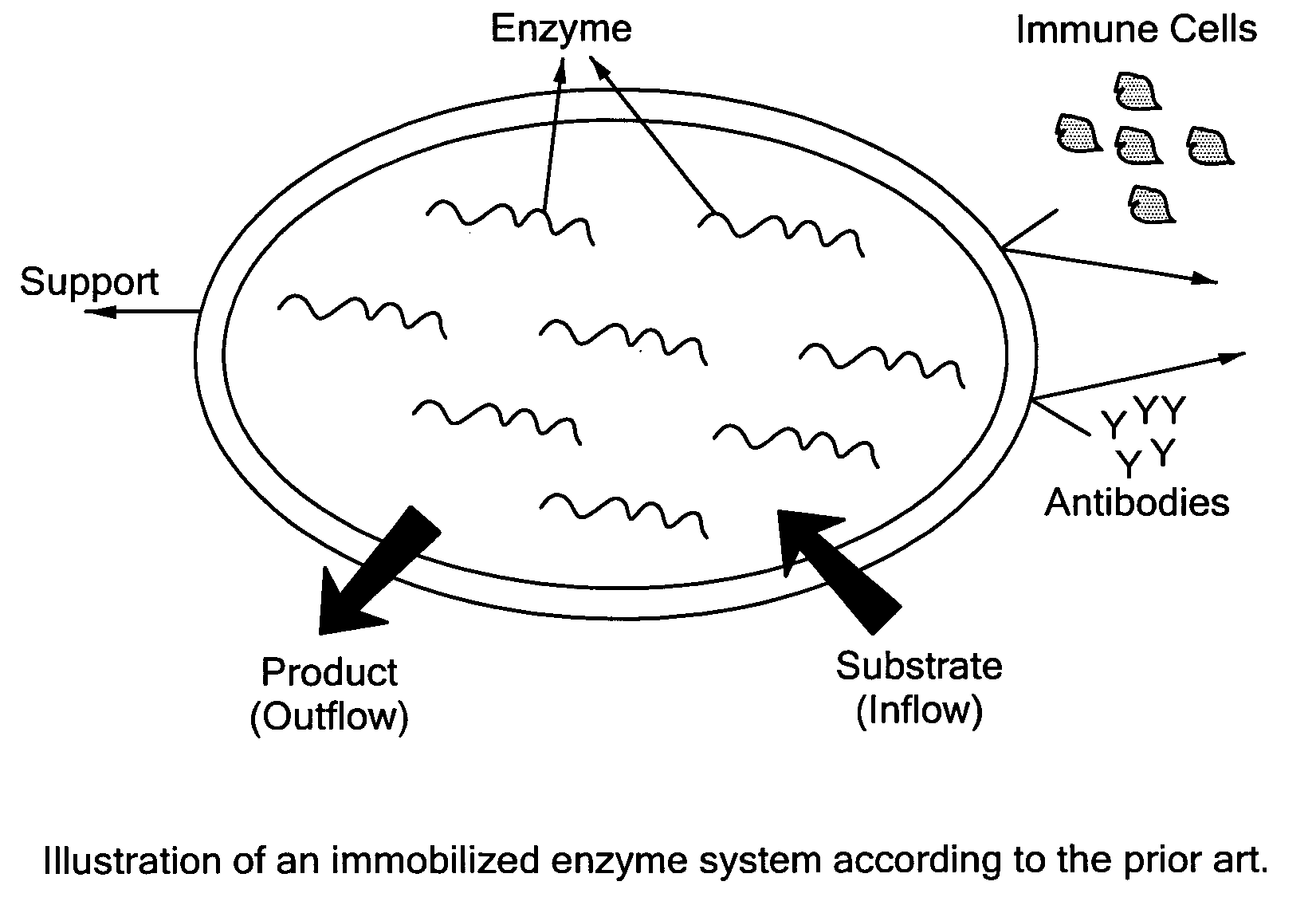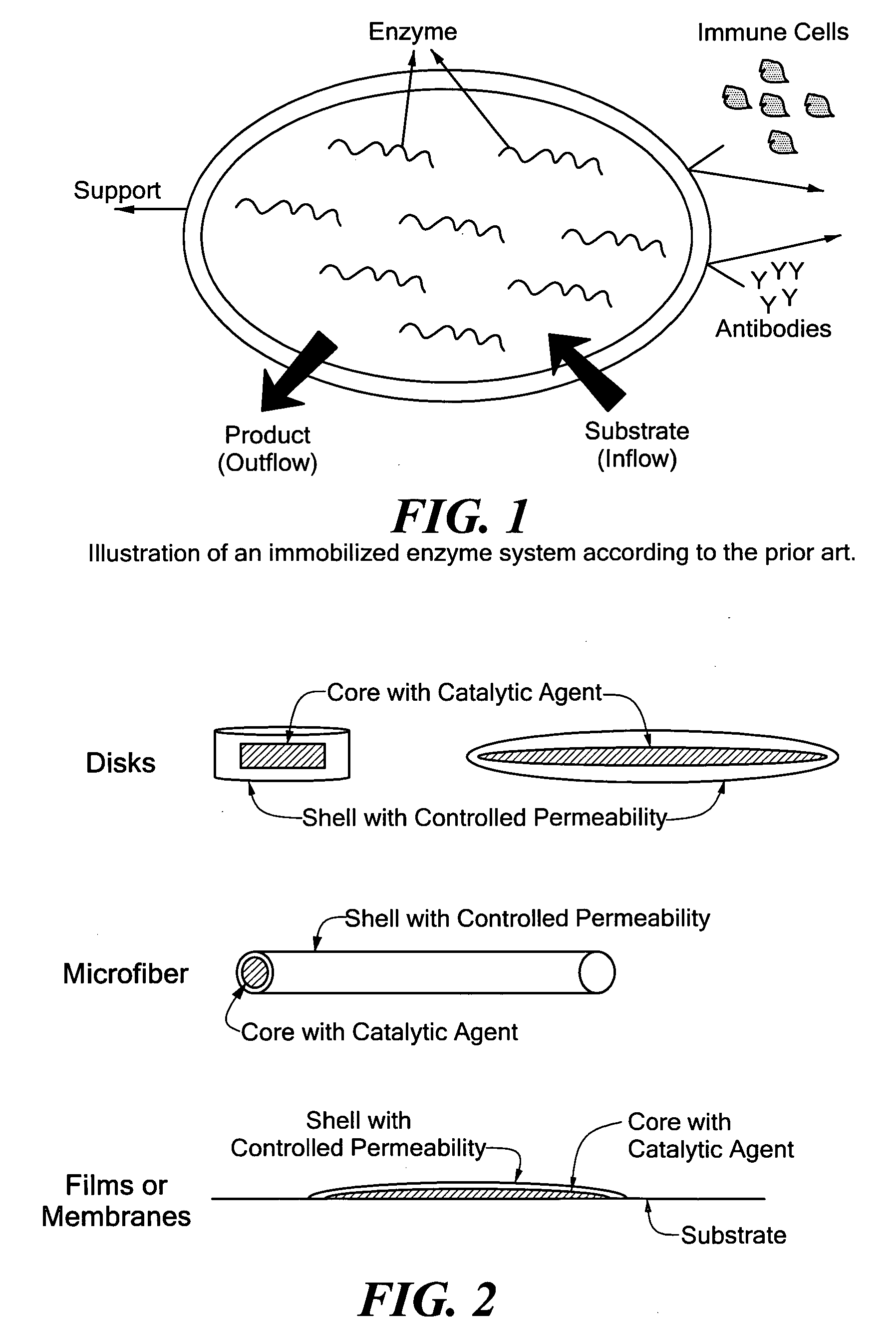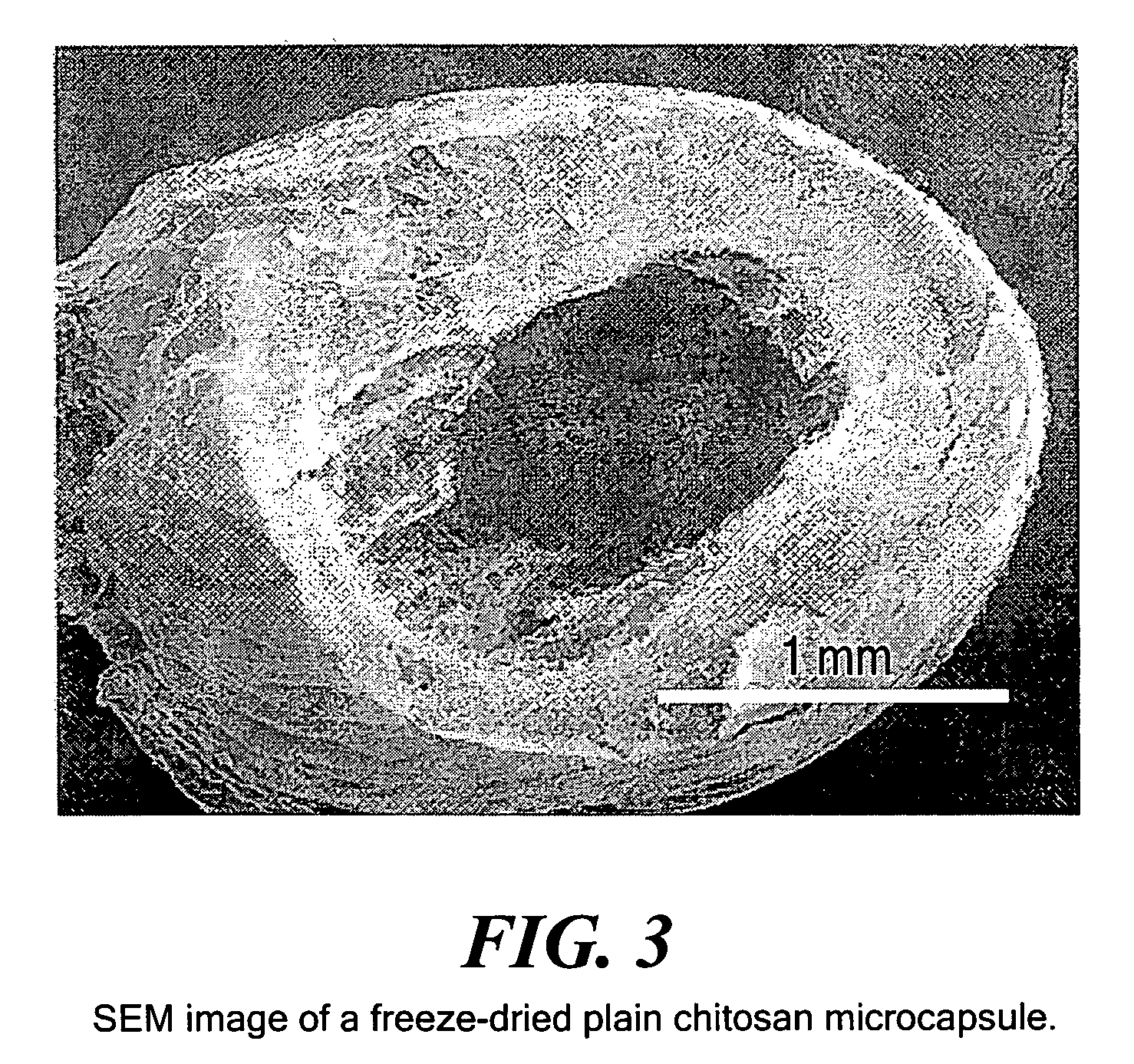Hybrid immobilized catalytic system with controlled permeability
- Summary
- Abstract
- Description
- Claims
- Application Information
AI Technical Summary
Benefits of technology
Problems solved by technology
Method used
Image
Examples
example i
Formation of Alginate-Chitosan Hybrid Microcapsules
[0041]Chitosan microcapsules without the alginate core were formed to optimize the conditions for the final alginate-chitosan hybrid microcapsules. The chitosan solution was prepared by dissolving 0.75 gram of chitosan in 100 ml of 0.1-M acetic acid. The solution was mixed for 8 hours, then filtered through glass wool and degassed overnight. The suitable concentration of chitosan was found to be 0.75% (w / v), and the optimum cross-linking time was found to be 1.5 hours.
[0042]Tests to optimize the conditions were done for alginate bead preparation. The type of alginate (Protanal®, Pronova, Wash.) used was determined by cross-linking alginate with different G:M ratios, Protanal® LF 20 / 200 (55:45 G:M ratio) was found to have the strongest walls at 0.34 M CaCl2 and 45 minutes cross-linking time. The optimum CaCl2 concentration to cross-link the alginate was determined by cross-linking alginate in different CaCl2 solutions (1-10% w / v). Th...
example ii
Determination of the Molecular Weight Cut-Off Point of Cross-Linked Chitosan
[0049]The permeability of chitosan is the rate-limiting step in the microencapsulated system. In order to estimate the molecular weight cut-off point of the cross-linked chitosan, a model representing the chitosan layer was developed in which a thin membrane acts as a layer surrounding the alginate core. The permeability coefficients for vitamin B2 (molecular weight 376 daltons) and vitamin B12 (molecular weight 1355 daltons) representing low-molecular weight substrates, and myoglobin (molecular weight 14,000 daltons) representing a high molecular weight substrate, were studied.
[0050]Chitosan solution was prepared by dissolving the polymer (750 kDa, 87.6% deacetylation) obtained from Pronova Biopolymers (Raymond, Wash.) in 0.1-M acetic acid to make a 0.75% (w / v) solution. Films were made by pouring 10 ml of the solution into a Petri dish (100×15 mm) and air-drying for up to 48 hours. The resulting films were...
example iii
Immobilization of Horseradish Peroxidase to Determine Loading Efficiency and Retained Bioactivity
[0057]Horseradish peroxidase (HRP) is an enzyme that catalyzes the conversion of hydrogen peroxide to water. O-phenylenediamine OPD(H2)— a chromogen for HRP catalyzed reactions—is converted from a colorless compound to a yellow product OPD(—H2) when HRP catalyzes the conversion of hydrogen peroxide to water. The yellow product can be detected using visible spectroscopy at 495 nm. Briefly, an OPD(H2) solution (0.25 mg / ml) was prepared in a 0.1 M citrate buffer at pH 6. Then 30% (v / v) hydrogen peroxide was added to provide a final concentration of 0.6% (v / v). One hundred microliters of hydrogen peroxide solution was placed in each well of a 96-wells microtiter plate. One hundred microliters of HRP (molecular weight 40,000, ICN) solution was then added to the wells, and after 10 minutes, the reaction was stopped by the addition of 50 μl of 1.0-N sodium hydroxide. HRP was tested for the effi...
PUM
| Property | Measurement | Unit |
|---|---|---|
| Solubility (mass) | aaaaa | aaaaa |
| Permeability | aaaaa | aaaaa |
| Ionicity | aaaaa | aaaaa |
Abstract
Description
Claims
Application Information
 Login to View More
Login to View More - R&D
- Intellectual Property
- Life Sciences
- Materials
- Tech Scout
- Unparalleled Data Quality
- Higher Quality Content
- 60% Fewer Hallucinations
Browse by: Latest US Patents, China's latest patents, Technical Efficacy Thesaurus, Application Domain, Technology Topic, Popular Technical Reports.
© 2025 PatSnap. All rights reserved.Legal|Privacy policy|Modern Slavery Act Transparency Statement|Sitemap|About US| Contact US: help@patsnap.com



